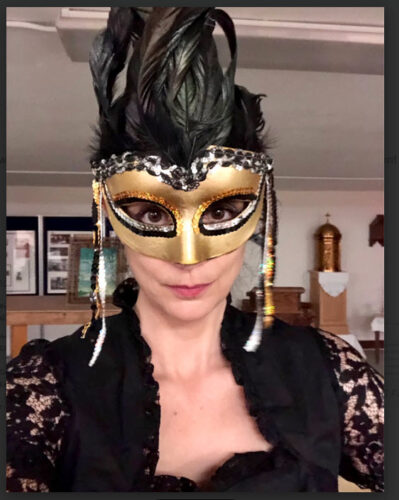by Suzanne Fatta
Published May 25, 2025
‘The contralto voice is one of the most misunderstood because it is so rare’
What if we could hear Antonio Vivaldi’s choral repertoire the way he intended? Archival evidence from 18th-century Venice reveals that the bulk of his choral music was written for all-female ensembles at the Ospedale della Pietà, one of the floating city’s four orphanages for girls. Many surviving accounts illustrate the high quality of Pietà performances, often penned by travelers undertaking the Grand Tour such as Jean-Jacques Rousseau, who was attracted by the reputation of these “angels of loveliness.”

Yet for much of the 20th century — despite first-hand accounts suggesting otherwise — many scholars assumed Vivaldi’s tenor and bass voices were intended for men, or that if indeed girls sang these parts, the bass line would have been transcribed up an octave. Misguided performance practices followed suit. By now, however, there’s ample evidence that the women themselves sang those low-voiced lines as written, at pitch. A list of new entrants to the Pietà chorus from December 1707, for example, includes two sopranos, four contraltos, three tenors, and one bass, including two described as “Paulina dal Tenore” and “Anneta dal Basso.” (Without family names, the orphans were listed by first name plus their instrument or vocal range.)
In opera, too, Vivaldi and his contemporaries across Europe, including G.F. Handel, Nicola Porpora, and Giovanni Porta, composed with low female voices in mind. As early as 1702, André Campra included a bas-dessus in his opera Tancrède — perhaps the earliest major role for a contralto. As Vivaldi scholar Michael Talbot wrote, “Women singing tenor and bass may have been a novelty, but men [often castrati] singing soprano and alto were commonplace in Vivaldi’s Venice, not only in churches but also in the many opera houses.” Known for its rich, dark, sometimes caramelly shading — with gender-bending elements in the mix — the contralto is as compelling a voice type as has ever existed on the stage.
Yet today’s musicology has raced far ahead of our educational system, where these basement female voices have been all but suppressed from the Western classical canon. And it’s not without cause: There is so little true contralto repertoire that a singer, if re-tooled as a mezzo-soprano, will have many more operatic and concert opportunities across her career. We are considered a financial liability.
Like many naturally low-voiced women, I was trained far out of my range throughout my schooling, even at some of the best conservatories in the world. The marginalization and ghettoization of any natural voice type is not only damaging to the singer’s physical and mental health, but reduces musical possibilities for the whole field. As a contralto profondo or oktavista, I sustained damage from many years of out-of-fach training, where singing an octave above my range proved unsustainable for my voice, muscles, and breathing apparatus. Esteemed voice teacher David L. Jones put it bluntly: “The contralto voice is one of the most misunderstood because it is so rare. Contralto singers often have been trained as mezzo-sopranos or even sopranos. Many contraltos suffer from low vocal self-esteem because their voices have not been trained correctly. They, as many singers, begin to think the problems are their fault, or that they are flawed as a singer.”
Thankfully, if slowly, that’s starting to change. Marian Anderson was a standout in her day, and there are notable role models from recent years, including the magnificent opera and concert contraltos Sara Mingardo and the late Ewa Podleś. In the U.K., an Oxford-based all-female ensemble of singers and players founded by Richard Vendome, called Vivaldi’s Women, has been reproducing the sound of the Ospedale della Pietà’s Figlie di Coro —the “Daughters of Music” — with much of their repertoire based on the magisterial research of Micky White.
Historically, there have always been women who sing in very low ranges, and will continue to do so. I gave what I believe to be the true modern premiere of Vivaldi’s Il Farnace as a female baritone. The opera premiered in 1727 at the Teatro Sant’Angelo in Venice with Maria Maddalena Pieri singing the title role of the General as a contralto (en travesti) — in other words, in the baritone range.
As founder of the U.S.-based The Women of Vivaldi (a sister group to the U.K.’s Vivaldi’s Women), I see our goal as two-fold: to better hear the sounds and range of female voice-types from the early 18th century; and to reduce damage to low-voiced women’s natural range, moving past the outdated idea of what singing bodies are meant to sound like.
Contralto Suzanne Fatta, an early-music performer, researcher, educator, linguist, and advocate, spent many years in Europe singing baritone roles in Baroque operas, notably with Vivaldi’s Women. Having studied at Oberlin, Harvard, Eastman, and York (U.K.), she is the founder of The Women of Vivaldi and Pavana Early Music Trio, based in Buffalo. www.suzannefatta.com

